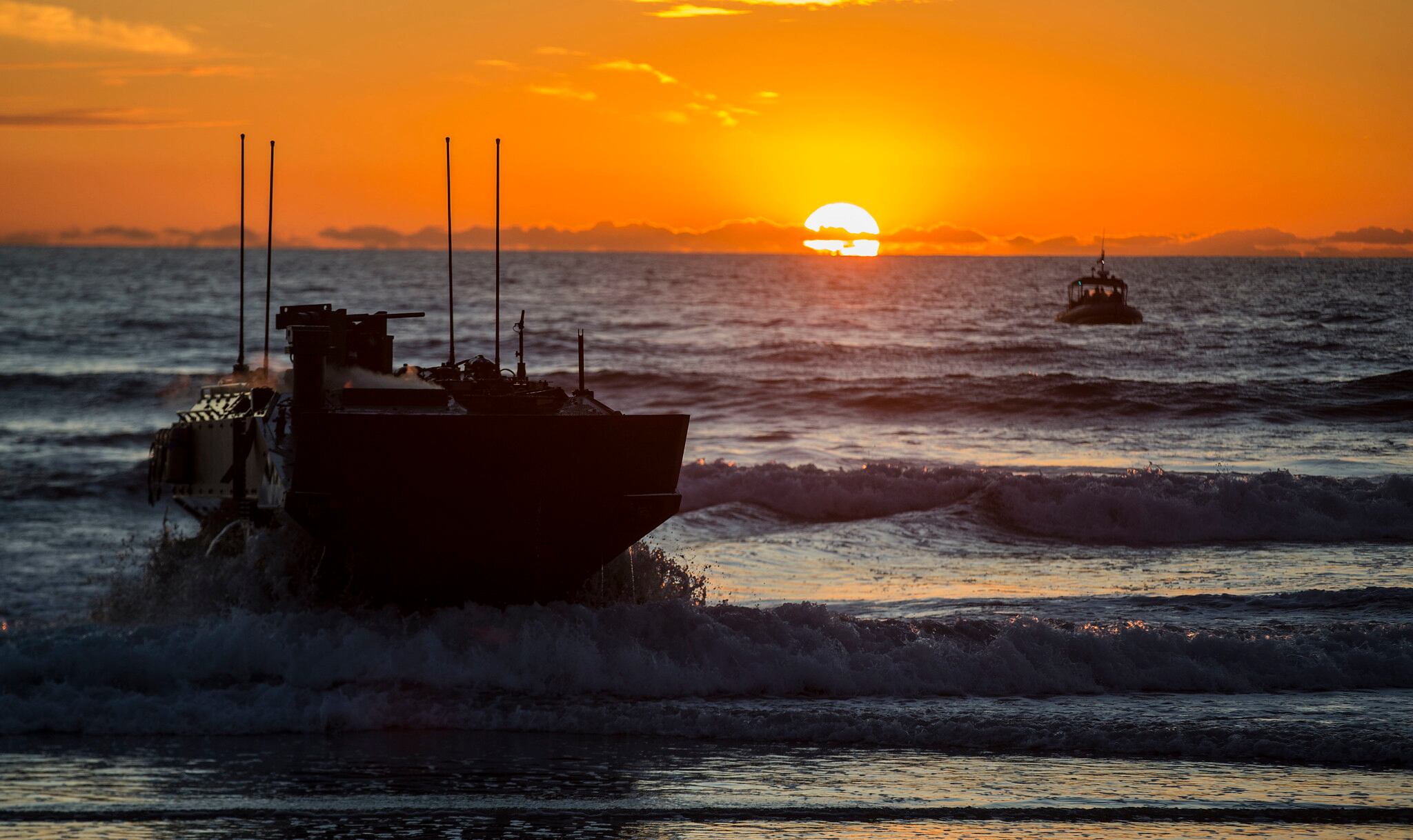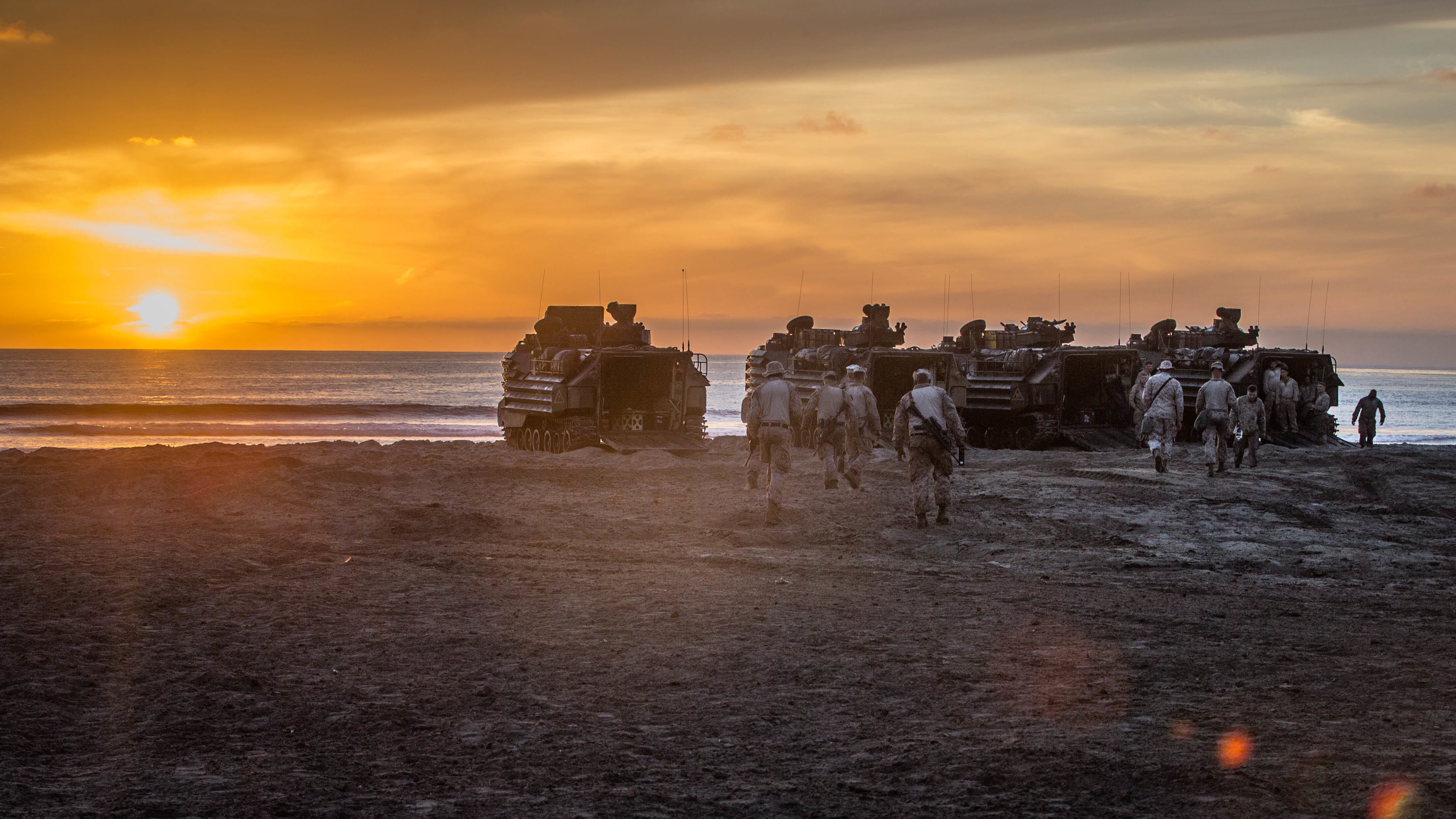WASHINGTON – In its quest to slim down and self-finance its modernization efforts to meet the China threat, the Marine Corps is getting ready to reorganize its headquarters, which will reduce civilian staff, according to a new memo obtained by Defense News from Marine Corps Commandant Gen. David Berger to Secretary of Defense Lloyd Austin.
In the memo, dated Feb. 23, Berger said the 27,000 Marines based in the Indo-Pacific region “require significant modernization and redesign ... to continue to play a role against the evolving threat” from China, the memo reads.
RELATED

Berger wrote that the redesign is being financed in part by retiring the Marines’ tanks and heavy bridging equipment and also reducing end strength by 12,000 Marines. But cuts to the civilian workforce are also in the offing.
“We will ... reform and reorganize many of our headquarters organizations and processes to gain the institutional agility this era of long-term global great-power competition demands,” the memo reads. “These initiatives have the common goal of producing the smaller by more mature, resilient and highly trained Fleet Marine Force of the future, backed by a headquarters and supporting establishment stripped of redundancy and bloat.”
The cuts will result in a roughly 15 percent “reduction in civilian personnel structure,” the memo said.
Berger has been on a quest to reshape the Marine Corps to operate inside the range of Chinese rockets and air forces — in other words, inside the chain of islands that bounds the South and East China seas. The Corps is aiming to have the redesign done by 2030.
Part of the effort has been to build “Marine Littoral Regiments,” that Berger hopes to station in Guam, Japan and Hawaii. These would be small units able to distribute throughout the theater on smaller amphibious warships, packing its own surveillance drones and communications, and bringing anti-ship missiles to hold Chinese surface vessels at risk.
The Marine Littoral Regiments are envisioned at roughly 1,800 to 2,000 Marines.
RELATED

Berger’s plans to transform the Corps have received wide, but not universal, praise. Former Marine and Secretary of the Navy Jim Webb criticized the plan as being too narrowly focused on China and fighting in the South China Sea, which Webb would reduce the Marines’ utility if that’s not, in fact, the war the U.S. needs to fight next.
Berger rejected the criticism, however, saying that the China threat demanded that the Marines keep pace and that the capabilities needed to defeat China would be broadly applicable.
“Are we too narrowly focused? I would argue absolutely not,” Berger said. “We’re pacing, in terms of capability, against a very rapidly developing adversary so that we’re never overmatched.
“But that’s not geographically constrained; that’s not nationally constrained. The Navy and Marine Corps operates around the world and I am very confident that will continue. The force that we end up with, you can apply that force to any mission set. It will be very capable.”
David B. Larter was the naval warfare reporter for Defense News.




